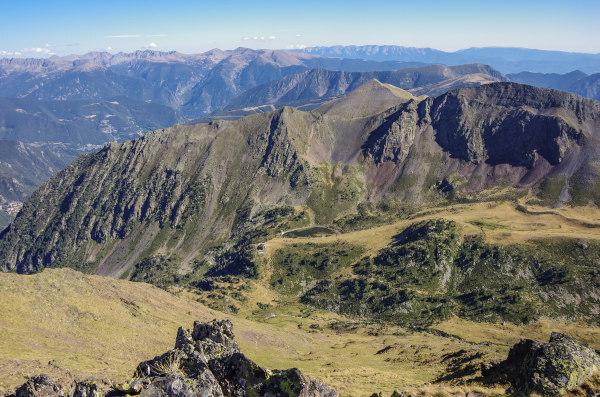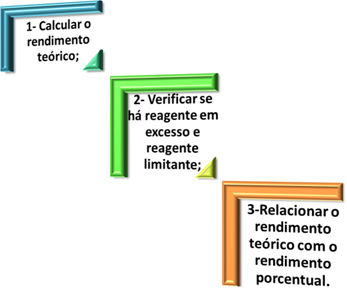Andorra is a country of 77 thousand inhabitants in Southern Europe, located in the Pyrenees mountain range between France and Spain. These two countries share the Executive Power of the Andorran territory, whose government system is the parliamentary co-principality.
The mountainous relief is one of the main determinants of the country's climate, characterized by mild temperatures. Andorra is considered a developed country, and its economy is concentrated in the tertiary sector, with emphasis on financial activities and tourism.
Read more:Scandinavia – Northern Europe region consisting of Denmark, Norway and Sweden
General information for Andorra
- Nameofficial: Principality of Andorra
- Gentile: Andorran
- Extensionterritorial: 468 km²
- Location: southern Europe
- capital: Andorra la Vella
- Climate: Mediterranean
- Government: parliamentary co-principal
- Divisionadministrative: districts, also called parishes (or parishes, from Catalan).
- Language: catalan
-
religions:
- Catholics: 75.1%
- non-religious and atheists: 6.5%
- other religions: 2.3%
- other Christian religions: 0.7%
- no information: 15.5% - Population: 77,000 inhabitants (UN, 2020)
- Densitydemographic: 164.2 inhab/km² (UN, 2020)
- Human Development Index (HDI): 0,868
- Coin: Euro (€)
- Gross Domestic Product (GDP): US$ 3,238,000,000
- GDP per capita: US$ 42,051.6
- Gini: [no official World Bank data]
- Timezone: GMT + 1 (Central European Standard Time)
-
foreign relations:
- UN
- WTO (observer)
- Organization for Security and Cooperation in Europe (OSCE)
- European Union (via customs union and diplomatic agreements)
Andorra history
There are records of human occupations where the Andorran territory is located since Prehistory. Over time, the area was under the influence of several foreign peoples., like:
- romans
- Visigoths
- francs
- muslims
Andorra became a principality in the year 1278 through an agreement signed by the Bishop of Urgell, in the region of Catalonia, and the Count of Foix, of France. During an extensive period, which lasted until the 20th century, the country remained governed exclusively by two princes, which was established by the agreement, one being the representative of France, and the other the bishop of Urgell.
A new constitution was drafted in 1993, giving way to the current system of government: the parliamentary co-principality. From then on, Andorra now has a Parliament or General Council, responsible for the country's Legislative Power.
See too: What are the countries in Europe?
Andorra Map

Andorra geography
The principality of Andorra is a small country in the south of the Europelocated between France, which is to the north, and the Spain, which is to the south. More precisely, the country borders the region of Catalonia. Its territory has an area of just 468 km², one of the smallest on the European continent.
Andorra climate
The predominant climate type in Andorra is the Mediterranean. With average elevations of almost two thousand meters, the altitude is the main climatic factor acting in the country, which has no coastline. Therefore, two seasons are well defined: winter and summer. You summers they are dry and have mild temperatures, with a maximum of 26 ºC. You winters they are long and quite cold, and may have temperatures below zero. The dry season is marked by intense cloudiness and the occurrence of precipitation in the form of snow.
Andorra is located in the Pyrenees mountain range, a mountain range that separates France from Spain. That is why, your relief consists of steep mountains and valleys.. The average elevation in the country is 1,996 meters, while the highest peak is Coma Pedrosa, with 2,946 meters.
The country's vegetation cover is typical of the temperate zone, composed of trees such as oaks and different species of conifers. In areas with higher altitudes, it is common to have smaller plants, such as shrubs.
You North Valira and Western Valira rivers they converge and give rise to the Grande Valira, which runs from the center towards the south of Andorra. These are the main water courses in the country. In addition, the relief provides the formation of large lakes, such as the Lake of Engolasters and the Lakes of Juclar, all of high tourist value.

Andorra Demographics
Andorra is one of the least populated countries in Europe. Its population is 77 thousand inhabitants, who are concentrated in the main valleys of the Andorran territory. The country's population growth rate has been negative in recent years (-0.2% in 2020 and -0.1% in 2021).
a portion of 87.9% of the population lives in cities. The biggest one is the capital, Andorra la Vella, with 22,600 inhabitants.
The average age of the population of Andorra is 46.2 years. In turn, life expectancy at birth is one of the highest on the entire planet: 83.23 years, being five years longer for women (85 years) than for men.
Just under half of the country's population (48.8%) is made up of Andorrans. About 25% are Spanish, 12% are Portuguese, 4.4% are French and 9.7% are from other countries not mentioned. Thus, in addition to the official language, which is Catalan, Spanish, Portuguese and French are spoken in the country.
Read more: Population aging - very common demographic phenomenon in European countries
Andorra Economy
O Gross Domestic Product (GDP) Andorra is $3.23 billion, while its per capita value was US$ 42,051.6, quite high and comparable to the figures registered for countries like France and Belgium.
THE country's economy is concentrated in the service sector, which accounts for 88.5% of GDP (UN, 2020). Tourism and commerce are Andorra's main sources of income.
The country has tourist attractions that range from the famous ski resorts to museums and its natural landscapes. Andorra receives an average of 8 million tourists a year, mostly from neighboring countries (France and Spain). In addition to commerce and tourism, financial services also stand out.
THE industry represents 11% of the country's economy, focused on the production of furniture and tobacco. Agriculture accounts for only 0.5% of GDP, as only 5% of the land is considered arable. Some products from primary sector are wheat, oats, rye and barley. In cattle raising, the creation of goats and cattle stands out.
![The ski resorts are major tourist attractions in Andorra. [1]](/f/cf0eebfb56f7bf105730506c9c50271e.jpg)
Andorra culture
The culture of the principality of Andorra is formed by the influences from France and Spain, with greater presence of cultural events of Catalan origin. In addition, the country's festive calendar is marked by predominantly Catholic religious celebrations.
One of the main celebrations is the Andorra National Party, which takes place on September 8, at the sanctuary of the Virgin of Merixtell, considered the country's patron saint. the beginning of solstice summer is celebrated with the fire festivals or falls, considered Intangible Cultural Heritage of Humanity by Unesco.
Among the typical dishes of the country, is the shield, of Catalan origin, which is a stew made with pork and vegetables.
Flag of Andorra

Andorra Infrastructure
Displacements in Andorra are mainly made by land.and. The country has 320 km of roads, according to information from 2019. The two main ones are those that connect the principality to Spain and France: respectively, the Carretera General 1 (GC-1), starting from the capital, and GC-2, originating in the parish (or district) of Encampment CG-3 connects the central region of Andorra, the area from which the aforementioned roads depart, to the northwestern portion of the territory.
There are no airports in the country. Andorra-La Seu d'Urgell airport, located in Spain, is one of the closest for access to the country.
The entire Andorran population has access to basic sanitation services and electricity. As for the internet, the most recent data from the UN show that this service reaches 91.6% of the inhabitants.
Andorra government
Andorra's system of government is the parliamentary co-principality. This means that the country's executive branch is composed of two princes. One is the president of France, and the other is Spanish, the bishop of Urgel, an ecclesiastical office.
Andorra's head of government, elected by the Parliament or General Council, is Xavier Espot Zamora.
Curiosities about Andorra
- The defense of Andorra is in charge of the armed forces of France and Spain. The country does not have a structured national defense system, and the population's security is carried out by a small police force.
- With the exception of emergency situations, the Andorran army only acts by giving greetings at official ceremonies.
- It is the territory with the largest number of museums per square kilometer in the world.
- The areas declared as World Heritage by UNESCO in Andorra account for 10% of the territory.
- The country is considered a tax haven.
Image credit
[1] Erika Cristina Manno / Shutterstock
By Paloma Guitarrara
Geography teacher

